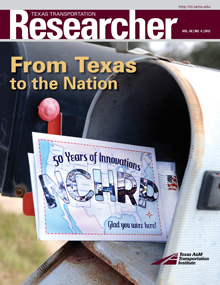
Manager
National Cooperative Highway Research Program
Transportation Research Board of the National Academies
In a three-way agreement in 1962, the predecessor organizations of the American Association of State Highway and Transportation Officials (AASHTO), the Federal Highway Administration (FHWA) and the Transportation Research Board (TRB) established the National Cooperative Highway Research Program (NCHRP) as a state department of transportation (DOT)-driven, collaborative research program.
Via state-DOT financial support, AASHTO sponsors the program, TRB manages the program, and FHWA coordinates state-level research activity with its own. This approach promotes teamwork among members of the various AASHTO committees and state DOTs, experts from FHWA Headquarters and its Resource Center, and TRB expert panels and staff, strengthening the relevance of research results and their applications nationwide. Over its lifetime, NCHRP has leveraged state-DOT research to solve transportation problems important to all levels of government and private practice — its No. 1 goal.
In 1979, soon after my arrival at NCHRP as a project manager, I became acquainted with the Texas A&M Transportation Institute (TTI) through two fine gentlemen who set my high level of appreciation for the agency. I met Professor Robert Lytton, henceforth known as Bob, and soon visited TTI, Bob and Texas for the first time, where this Rhode Island native was soon humbled by what I believe were habanero peppers. That same year, I attended a TRB retreat in Virginia and had the opportunity to meet then-TTI Director Charley Wootan. I’ve since had many opportunities to visit and work with TTI’s first-rate researchers as a project manager and, since 1992, as the manager of NCHRP.
TTI preceded the beginning of NCHRP by 10 years or so — a good thing for NCHRP. By 1962, the Institute had established itself as a very capable organization and has remained competitive ever since (as evidenced by its 130 NCHRP contracts totaling more than $38 million over the years). TTI has responded to transportation’s evolving issues, keeping up with changes in (and helping to advance) technology, materials and various analytical procedures. During the early years of the Interstate Highway System, NCHRP focused research on the “hard subjects” of transportation and highway engineering. TTI continues to excel in these areas, innovating how we deliver, operate and maintain our transportation system. Exemplary examples of TTI’s contributions that have really made a difference come to mind in the traffic, safety and pavement areas. And recently, TTI has taken on topics such as sustainability, better cost estimations and future scenario planning, which will help DOTs become more proactive, rather than reactive, to change.
And change is coming. Attention to the research basics will be a constant for NCHRP and TTI, but state DOT interests continue to broaden. As a result of the positives of advancing technology and the negatives of shrinking funding, state DOTs need to improve the way they do business. DOTs will need to think more outside the box to achieve bigger, better payoffs down the road. Some of that is happening now through NCHRP’s 20-83 series of projects, entitled Long-Range Strategic Issues Facing the Transportation Industry. Once again, TTI was ready and has a research contract in the series.
Evidence exists on practically every road in America that the NCHRP initiative has achieved its goal. TTI has played a major role in that success. Tomorrow will present new challenges, but if past predicts future, both NCHRP and TTI stand ready to meet them. Meeting those challenges is what drives us to achieve research excellence.


